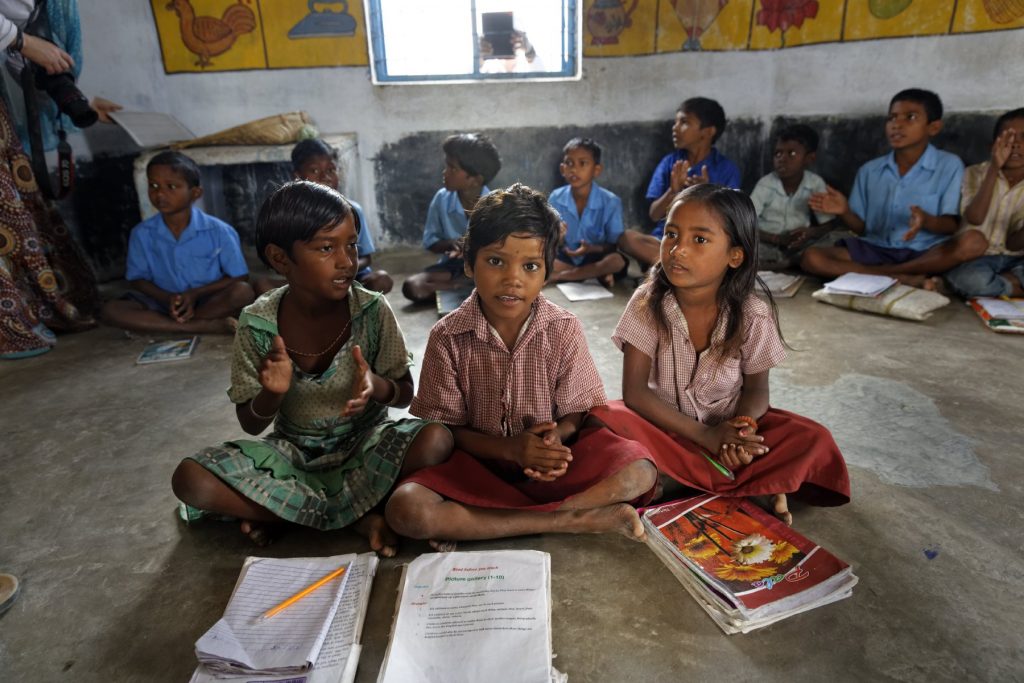SN Misra
The draft education policy unveiled by the Modi government makes a significant departure from earlier policies. For the first time, it has highlighted the importance of quality early child education. The Right to Education Act 2009 gave every Indian citizen the fundamental right to get education from a government school from the age of 6.
The Parliament covered children from three to six years of age under Article 45 (Directive Policy). Through a network of anganwadi centres, about 4 crore children are provided nutritional needs and informal pre-schooling, after a child attains the age of three. A committee headed by Professor K Kasturirangan has clearly recognised that pre-schooling was a weak plank of an otherwise creditable nutritional programme for children and expecting mothers.
The committee notes that 85 per cent of a child’s cumulative brain development takes place prior to the age of six. If children do not get proper care, nurture, psychosocial environment, and cognitive and emotional stimulation, their brain development would be irreversibly impaired. The Kasturirangan committee has, therefore, recommended that every child between the ages of 3 and 6, must have access to free, safe, high quality education by 2025 as a fundamental right. This would require a constitutional amendment to Article 21A so that early childcare and education (3-6 years) segues into formal schooling at the age of six. This will provide holistic care for several poor children in terms of nutritional supplements, health check-up and schooling.
The Kasturirangan committee has, therefore, recommended that every child between the ages of 3 and 6, must have access to free, safe, high quality education by 2025 as a fundamental right
This recommendation of the committee will bridge the gap between well-off families and disadvantaged groups. It has been proven empirically that every rupee invested in quality pre-schooling will fetch returns of Rs10 to the GDP. By making robust quality education a component of anganvadis, the study group is trying to bridge the social divide in terms of educational opportunity. The policy has gone one step ahead by suggesting fundamental structural changes such as co-locating anganvadi centres with primary schools, have standalone pre-schools and it has implored the government to make quality education at the age of three a precursor to real empowerment.
It may be recalled that the Twelfth Plan Document had flagged access, equity and excellence as the tripod of the education policy of the country. The recurrent theme of independent surveys in ASER has been that the learning outcome has been the weakest link. Fifty per cent of children in Class V cannot read the text of Class II. Around 20 per cent cannot do simple arithmetic division. Reading and numeracy have been singular casualties in our government schooling system, owing to which close to 30 per cent parents prefer to send their children to private schools at exorbitant costs. A World Bank report of 2017 has assessed productivity of Indian children at 44 per cent of their better-performing Asian peer countries such as South Korea and China. An OECD survey 2009, in its PISA report had placed India second from the bottom among 72 countries in terms of learning outcomes.
The new education policy notes these disconcerting trends in primary schools but has wisely chosen to tackle the problem of quality education from an early age rather than waiting till a child goes to school at the age of six without formal preparation through informal and joyous learning environment. The policy has suggested that the oversight of early childhood education should be handled by the HRD ministry, who would — in tandem with ministries of women and child development, and health and family welfare — provide durable quality architecture to early childhood education.
The other major change that the policy has suggested is to have foundational literacy and numeracy programmes up to Class V so that no child is deprived of basic learning abilities as the ASER reports have been bringing up.
It has suggested that the mid-day meal programme should also be available for children in pre-schools. It has made a number of recommendations to improve quality of teaching and to provide suitable incentives to teachers, both in terms of remuneration and training.
Most states at present spend 10 per cent of their budget on education. If quality education landscape is implemented, this would have to be doubled by states. Incidentally, states such as Kerala and Delhi spend more than 20 per cent of the budget on education, with significant improvement in quality of teaching, school infrastructure and learning outcomes.
After such a paradigm shift in policy recommendation, the committee has lamentably fallen into the trap of Hindi chauvinism by resurrecting the three-language formula originally mooted in 1938. The committee has come to a surprising conclusion that English has not become the international language as envisaged. It has assessed that 15 per cent of Indians speak English, which coincides with the percentage of elites in the country.
On the other hand, 54 per cent speak Hindi and the three language formula will improve equity and make India an inclusive society. “The existing power structure of English language must be stopped,” the policy recommends. Hindi teachers from Hindi-speaking states will be the new ambassadors to promote equity of language in the country, foisting Hindi upon non-Hindi–speaking children. This is clearly a recipe for another anti-Hindi agitation.
The draft policy has done a commendable job by underscoring the importance of holistic care of a child at the age of three to climb the steep path of quality learning in future. Institutional arrangements, funding suggestions and improvement in teaching quality are also in line with Sustainable Development Goal 4, which advocates inclusive and equitable quality education and life-long learning opportunities for all.
American Historian and Indologist Stanley Wolpert has observed: “Quality learning will be the swiftest elevator to modern Indian power.” But it is lamentable why a roadmap of quality learning is being cluttered by promoting Hindi chauvinism.
The writer teaches constitutional law.

